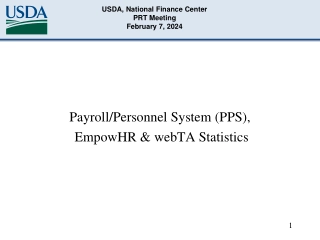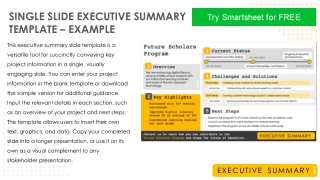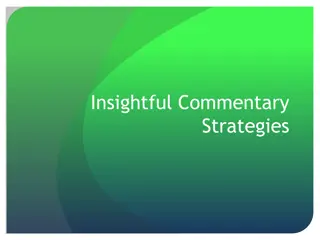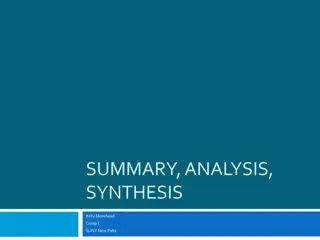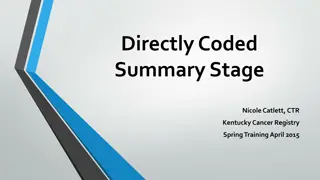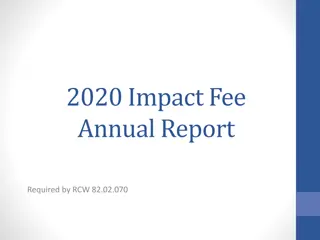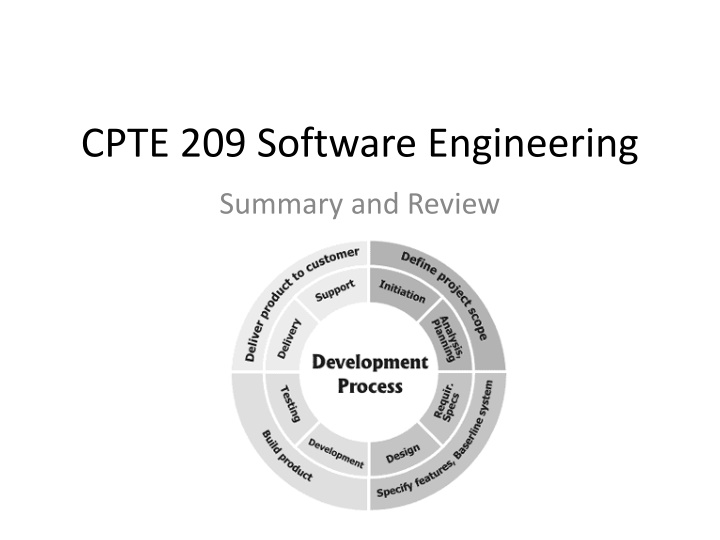
Software Engineering Principles and Balancing Agility
Explore the principles of software engineering, including the importance of custom process models, agile methodologies, and managing complexity. Learn how to balance agility and discipline in various project scenarios.
Download Presentation

Please find below an Image/Link to download the presentation.
The content on the website is provided AS IS for your information and personal use only. It may not be sold, licensed, or shared on other websites without obtaining consent from the author. If you encounter any issues during the download, it is possible that the publisher has removed the file from their server.
You are allowed to download the files provided on this website for personal or commercial use, subject to the condition that they are used lawfully. All files are the property of their respective owners.
The content on the website is provided AS IS for your information and personal use only. It may not be sold, licensed, or shared on other websites without obtaining consent from the author.
E N D
Presentation Transcript
CPTE 209 Software Engineering Summary and Review
Course Objectives Students will be able to: Identify the appropriate process model for a software project based on an analysis of the nature of the application and project circumstances Synthesize elements from the various process models to create a custom process model tailored to the situation at hand.
Quasi Agile Principles Whenever there is a problem have a conversation Always use the lightest weight possible mechanism to solve the problem Face to face communication is faster, cheaper, higher bandwidth, and less ambiguous than written documentation. Low tech solutions are faster, cheaper, and more likely to be used that complicated hi-tech solutions. The cost of a process step must always be weighed against the cost of the implementation and the risk it mitigates Always give simple, low tech solutions a chance, but use a more complex solution if needed. 3/166
Balancing Agility and Discipline Plan Driven Agile Personnel Less skilled Highly Skilled Criticality Many lives, Single life, Essential Funds, Discretionary funds, Comfort Project Size 300, 100, 30, 10, 3 Culture Requires Order, Thrives on Chaos Dynamism Very stable requirements, Highly volatile requirements 4/170
Balancing Agility and Discipline Plan Driven Agile Industry oversight Heavily regulated, somewhat regulated, unregulated Hardware dependencies Embedded, custom attached devices, desktop application Organizational culture Suit and tie, business casual, jeans Industry type Commercial businesses; Hi tech: compilers, OS Funding capability Deep pockets, standard funding, shoestring budget Organization size Huge: government; Small: start up Client Interaction Formal document based; Close interpersonal Risk Architecture, Technology; Requirements, Business Value 5/170
Course Objectives Students will be able to: Identify and explain the sources of complexity in software systems and projects
Course Objectives Students will be able to: List and explain the fundamental principles of good software engineering Domain Analysis Based Architecture-Centric Use-Case Configured Component Biased Quality Engineered
Use-Case Configured Business Goals & Technical System Requirements Domain Relationships Commercial Standards & Frameworks Architecture Use Cases Application 8
Course Objectives Students will be able to: Analyze the impact of continuous integration, incremental development, and early and frequent releases on the development team and stakeholders.
Course Objectives Students will be able to: Analyze the appropriateness of various process improvement models to a given corporate situation. CMMI ISO 900X
Course Objectives Students will be able to: Acquire and document customer requirements for a software application Project Discuss the problems inherent in requirements definition and describe how to help compensate for these difficulties. Client knowing what they want Client knowing the cost Client knowing what technology can do Client being able to articulate what they want Developers understanding the requirements Lack of domain knowledge Ambiguous requirements Missing requirements Assumed requirements
Course Objectives Students will be able to: Discuss the difference between software development as a process of transforming a fixed set of requirements into software and software development as a means of delivering value to a set of stakeholders. ?????????? Software Development Process input output Software System
Course Objectives Students will be able to: Describe the differences between architectural design and detail design. Components (subsystems, etc.) Interfaces to each component Relationships between components Patterns of interactions Constraints Create an appropriate object-oriented design by applying OO design patterns and principles to a given set of requirements An architecture for a system is the pattern of connections among the basic components of the system; the pattern embodies the relations and constraints among the constituent pieces of the system.
Course Objectives Students will be able to: Explain the various types of testing and review procedures and their applicability and limitations Unit testing Integration testing System testing Functional requirements Quality requirements Black Box White Box Contribute to the formation of a work breakdown structure for a project What tasks are necessary to the creation of a simple website for a small business www.mywebsite.com
Course Objectives Students will be able to: Discuss the use of product metrics to access the quality of software Time and effort to change software over time Complexity Number of entries in the issue tracking database Discuss the use of process metrics to access the progress of software development % stories running and tested Lines of code or function points completed Discuss the use of risk analysis to guide project decisions and communicate levels of uncertainty to stakeholders Frequency, criticality, complexity -> Risk Acceptance, mitigation, prevention Best case, expected case, worse case and WHY
Course Objectives Students will be able to: Discuss the interlocking activities, phases, roles, processes, and procedures of the software engineering process Domain analysis, Application analysis, Architecture, Detail Design, Implementation, Integrate and test Describe the primary reasons for project failure and discuss preventative measures for each We fail to properly manage risks We don t build the right thing We are blindsided by technology
Course Objectives Students will be able to: Discuss the categories of tools that support the software engineering process and evaluate the importance of each category for a given project Use an appropriate modern software engineering toolset for a given software project
Automated Tools Testing Developer Installshield CASE DBMS, Middleware Compiler Report Writer Debugger Build tools Class browsers GUI and DB builder Configuration management Web development tools
Automated Tools Both Project Management Word processor Project planning and tracking text editor Estimating Spreadsheet Scheduling Group communications Defect tracking Web Browser


